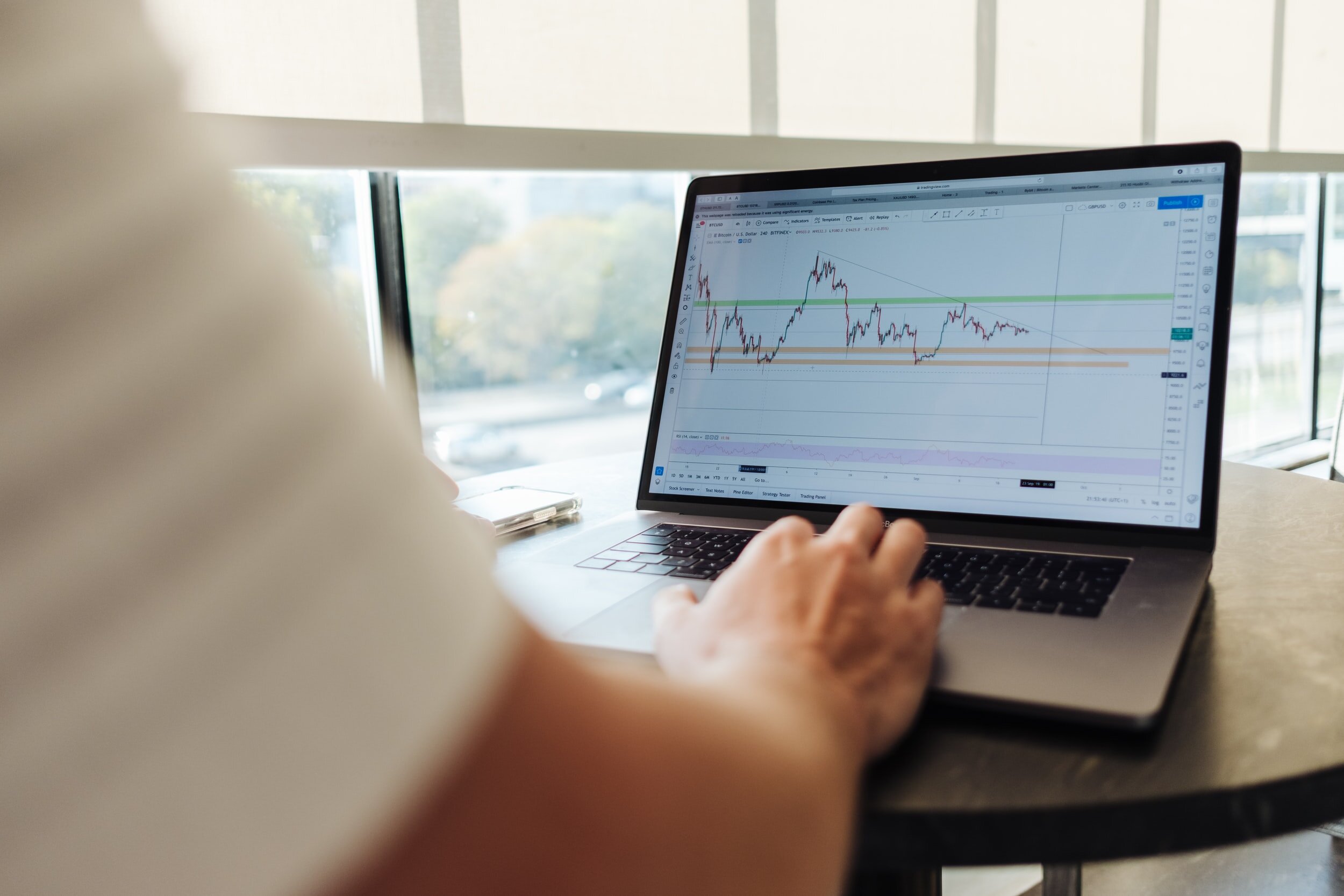The market was disappointing to say the least in the 2022 calendar year. For the first time in the history of Investment Mob, we took a loss on our yearly stock picks. 2023 hopes to show some optimism in the markets even though the FED remains steadfast on raising interest rates and a looming recession seems emanate. Tom and team comes into the New Year focused and ready for some more swings in the market which can result in Investment Mob coming back to the black. Here at Investment Mob we hope 2023 finds you well and give you the gift of Tom’s 23 Stocks under $23 dollars for the year 2023.
1. Adyen N.V. (ADYEY $14.09) operates a global financial technology payment platform, risk management, infrastructure for authorizing payments and settlement services connecting them directly to Visa, Mastercard and other providers.
Market Cap: $44 Billion Ave Trade Volume: 926,000 shares
2. Aehr Test Systems (AEHR $22.59) provides test systems for burning-in semiconductor devices in wafer level, singulated die, and package part form.
Market Cap: $621 Million Ave Trade Volume: 1,000,000 shares
3. Asana (ASAN $14.00) operates a work management platform for individuals and teams. Asana enables teams to share daily tasks, strategic initiatives; and organization wide goal settings.
Market Cap: $2.9 Billion Ave Trade Volume: 3,400,000 shares
4. The AZEK Company (AZEK @ $20.81) engages in designing, manufacturing, and selling of building products for residential, commercial, and industrial markets. Offers bathroom and storage solutions under the Aria, Eclipse, Hiny Hiders, TuffTec, and Duralife to schools, stadium arenas, industrial plants, and commercial facilities.
Market Cap: $3.1 Billion Ave Trade Volume: 2,600,000 shares
5. Bloom Energy (BE $20.81) designs, manufactures, and installs fuel cell systems for on-site power generation. Bloom Energy Server converts fuel, into electricity through a process. Bloom Energy serves data centers, hospitals, healthcare manufacturing facilities and more.
Market Cap: $4.0 Billion Ave Trade Volume: 2,600,000 shares
6. Confluent (CFLT @ $21.80) operates a data streaming platform. It offers Confluent Cloud, a managed cloud-native service for connecting and processing data; and Confluent Platform software that connects and processes data in real-time.
Market Cap: $6.2 Billion Ave Trade Volume: 2,700,000 shares
7. Energy Transfer, LP (ET $11.61) provides energy-related services operating pipelines for refined products, natural gas, natural gas liquids, and crude oil. Currently yields 8.9%.
Market Cap: $35.7 Billion Ave Trade Volume: 18,100,000 shares
8. Fastly (FSLY $8.55) operates an edge cloud platform for processing, serving, and securing its customers applications. The edge cloud is a category of Infrastructure as a Service that enables developers to build, secure, and deliver digital experiences at the edge of the internet.
Market Cap: $1.0 Billion Ave Trade Volume: 3,150,000 shares
9. Global-e Online (GLBE $20.13) provides a platform which enables international shoppers to buy online and merchants to sell worldwide.
Market Cap: $3.1 Billion Ave Trade Volume: 1,300,000 shares
10. Kimco Realty Corporation (KIM $20.98) owns interests in 400 U.S. shopping centers and mixed-use assets comprising 70 million square feet of gross leasable space in the top major metropolitan markets. Yields 4.39%.
Market Cap: $13.0 Billion Ave Trade Volume: 4,850,000 shares
11. Fluence Energy (FLNC $19.42) offers energy storage products and services, and artificial intelligence enabled digital applications for renewables and storage applications. Fluence Energy storage products include: Gridstack, Ultrastack, Sunstack and Edgestack.
Market Cap: $2.25 Billion Ave Trade Volume: 874,000 shares
12. Nio (NIO $11.06) designs, develops, manufactures, and sells smart electric vehicles in China.
Market Cap: $19.0 Billion Ave Trade Volume: 61,500,000 shares
13. Samsara (IOT $12.36) provides solutions that connect physical operations data to its Connected Operations Cloud. Serves industries, including transportation and logistics, construction, field services, utilities and energy, government, healthcare and education.
Market Cap: $6.4 Billion Ave Trade Volume: 1,400,000 shares
14. SentinelOne (S $13.17) operates as a cybersecurity provider in the United States and internationally.
Market Cap: $3.7 Billion Ave Trade Volume: 3,840,000 shares
15. Schrodinger (SDGR $19.89) provides physics-based software platform that enables discovery of novel molecules for drug development and materials applications.
Market Cap: $1.35 Billion Ave Trade Volume: 602,000 shares
16. Spirit Airlines (SAVE $19.26) provides airline services to 85 destinations in 16 countries in the United States, Latin America, and the Caribbean.
Market Cap: $2.0 Billion Ave Trade Volume: 1,100,000 shares
17. Starwood Property Trust (STWD $18.92) operates as a real estate investment trust (REIT) in the US, Europe, and Australia. Starwood distributes at least 90% of its taxable income to stockholders. Yield 10.15%
Market Cap: $6 Billion Ave Trade Volume: 2,900,000 shares
18. StoneCo (STNE $9.30) operates a cloud-based open application programming interface platform that delivers transaction processing services to clients.
Market Cap: $2.9 Billion Ave Trade Volume: 6,475,000 shares
19. SunPower (SPWR $20.37) a solar technology and energy services provider, offers solar, storage, and home energy solutions to customers primarily in the United States and Canada.
Market Cap: $2.17 Billion Ave Trade Volume: 2,000,000 shares
20. Sweetgreen (SG $9.51) develops and operates fast-casual restaurants serving healthy foods prepared from seasonal and organic ingredients Sweetgreen’s owns and operates 140 restaurants.
Market Cap: $1.0 Billion Ave Trade Volume: 1,900,000 shares
21. Toast (TOST $17.77) operates a cloud-based and digital technology platform for the restaurant industry. Toast offers Point of Sale (POS), a hardware product; Toast Order & Pay, which allows guests to order and pay from their mobile devices and Toast Go, a handheld POS device that enhances the table turn times.
Market Cap: $9.25 Billion Ave Trade Volume: 5,900,000 shares
22. Wendy’s (WEN $22.80) operates, develops, and franchises quick-service restaurants specializing in hamburger sandwiches. Wendy’s operates approximately 403 company-operated restaurants; 5,535 franchised restaurants in the United States; and 1,006 franchised restaurants internationally.
Market Cap: $4.9 Billion Ave Trade Volume: 2,000,000 shares
23. ZIM Integrated Shipping Services (ZIM $16.29) provides door-to-door and port-to-port transportation services for end-users, consolidators, and freight forwarders. Operates a fleet of 118 vessels (110 container vessels and 8 vehicle transport vessels) as well as 114 chartered-in vessels and network of 70 weekly lines.
Market Cap: $1.95 Billion Ave Trade Volume: 4,500,000 shares
24. Amplitude (AMPL $12.20) provides a digital optimization system to analyze customer behavior within digital products. Amplitude offers a suite of products including: Amplitude Analytics, Amplitude Recommend and Amplitude Experiment.
Market Cap: $1.4 Billion Ave Trade Volume: 488,000 shares
25. Vuzix (VUZI $3.91) develops and provides a cloud-based unified customer experience management platform for enterprises worldwide. Sprinklr enables organizations to do marketing, advertising, research, care, sales, and engagement across channels, including social, messaging, chat, and text.
Market Cap: $268 Million Ave Trade Volume: 698,000 shares
Disclosure: Tom currently own shares of ALL the previously listed securities as speculative investments in his portfolio. These stock picks are in no way, shape, or form intended to be financial advice. They are just investment ideas that encourage the reader to do further research on his or her own. Tom receives no financial compensation for this article. Furthermore, Investment Mob LLC is not a registered broker-dealer or a registered investment adviser. Any product from Investment Mob LLC is furnished for your personal, noncommercial, informational purpose only, and a particular security in the product does not constitute a recommendation to buy, sell, or hold that or any other security, or that any particular security, portfolio of securities, transaction or investment strategy is suitable for any specific person. You further understand that Investment Mob LLC will not advise you personally concerning the nature, potential, value or suitability of any particular security, portfolio of securities, transaction, investment strategy or other matter. To the extent any of the information contained in the product may be deemed to be investment advice, such information is impersonal and not tailored to the investment needs of any specific person. You acknowledge that you are responsible for your own financial decisions. I own shares of Energy Transfer (ET), Fastly (FSLY), Nio (NIO), and SentinelOne (S). I have no plans to initiate any such positions within the next 48 hours. I wrote this article myself, and it expresses my own opinions and investors wishing to purchase shares of any of the above listed stocks should do their own due diligence. I am not receiving compensation nor do I have any business relationships with any companies mentioned in this article.











